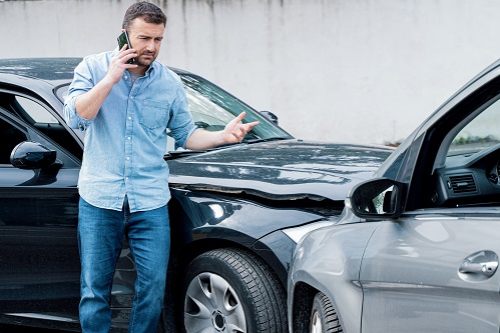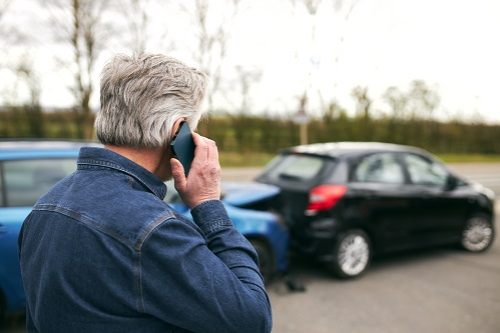Ridesharing and insurance with Lyft
When you're working as a rideshare driver, each trip is divided into three coverage periods:
- Period 1: The app is on. You're waiting for a ride request.
- Period 2: You've been matched with a passenger. You’re on your way to the pick-up location.
- Period 3: The passenger is in the car. This period ends when you drop off the passenger.
Lyft insurance coverage varies during different periods of your trip. Your personal policy is only in effect when the Lyft app is turned off. It's important to understand what insurance coverage will be in place if you were to get into an accident while driving for Lyft, what your insurer or Lyft will cover and what you may be financially responsible for in these situations.
What does Lyft insurance cover?
Lyft offers the least coverage during Period 1. Drivers who already have this level of coverage through their personal policy are covered under Lyft's contingent comprehensive and collision coverageCollision coverage helps pay for repairs or replacement of your car if it's damaged in an accident, regardless of who is at fault and is subject to a deductible. during Periods 2 and 3.
Here's an overview of the Lyft insurance policy:
During Period 1: Liability limits are low; comprehensive and collision coverage aren’t offered.
Lyft's liability coverage has limits of $50,000 per person bodily injury, up to $100,000 per incident and $25,000 for property damage coverage. This protection is considerably less than the $100,000 of bodily injury coverage per person, $300,000 of bodily injury coverage per accident and $100,000 of property damage coverage that most insurance experts recommend.
Keep in mind that with liability insuranceLiability insurance covers sums that an insured becomes legally obligated to pay because of bodily injuries or property damage, or financial losses caused to other people., injuries or damages to other drivers or passengers are covered. However, you'll be financially responsible for damage to your own car and your own medical bills.
During Periods 2 & 3: Liability limits are higher and Lyft's contingent comprehensive and collision coverage is in effect -- as long as you already have this coverage on your personal policy.
Similar to Uber, Lyft's coverage includes $1 million of third-party liability coverage, uninsured/underinsured motorist bodily injury and contingent comprehensive and collision coverage that covers up to the cash value of your car. However, the latter coverage comes with a $2,500 deductibleThe deductible is the amount you pay out of pocket for a covered loss when you file a claim., so you'll incur significant out-of-pocket expenses before Lyft's insurance covers any accident or injury-related expenses.
Though Lyft's insurance policies lead to coverage gaps that can cost you money, relying on your personal insurance isn't the best approach either.
What your personal auto insurance covers
Your personal auto insurance only covers your vehicle’s personal use -- not commercial activities that earn you money.
Rideshare driving falls into the latter category. So, unless you have a commercial policy or add an endorsementAn endorsement is a supplement or change to an insurance policy. It amends the original policy and can increase or decrease coverage, change names or update addresses. to your existing policy to specifically cover ridesharing, you can't count on your personal policy for coverage. In fact, all personal auto insurance policies contain a clause that specifically excludes using your vehicle for commercial activities.
"Your personal auto policy is not written to handle the exposure of commercial operations in regards to driving an individual for pay. Not to mention the liability limits are limited," says Ben Galbreath, a producer with Wallace & Turner, an independent insurance agency in Springfield, OH.
If you're working for a rideshare service, your personal policy will cover you only when the app is turned off. Once the app is open, Lyft's insurance policy kicks in, providing liability coverage with lower limits during Period 1 and more coverage once you pick up and begin transporting passengers. This is why you need rideshare insurance.
Rideshare insurance is additional coverage -- available via a separate, standalone policy or by adding an endorsement to your personal policy. This coverage can fill coverage gaps in Lyft's insurance.
Though different insurers offer varying coverage levels during different periods of a trip, rideshare insurance can ensure you're fully protected while driving for Lyft. For example, GEICO offers coverage for all three periods through a standalone policy that comes with a $250 deductible. That deductible is a fraction of Lyft's $2,500 deductible. State Farm also offers coverage during all three periods through an endorsement that's added to your personal policy. However, adding this endorsement increases your premium 15% to 20%.
USAA and Farmers both offer coverage during Period 1, which is considered the riskiest period for drivers because Lyft's lower-limit liability coverage is in effect during this time. You can review our "Ridesharing Insurance Coverage by State" chart to get a better idea of what different insurers offer in your area.
Coverage recommendations for rideshare drivers
You should carry the following three types of insurance on your personal policy, as well as a rideshare endorsement or separate rideshare coverage, if you decide to drive for Lyft.
There are a couple of other coverages you also should consider.
- Liability: Every state in the country requires drivers to carry liability insurance. Required coverage levels vary. Liability insurance covers injuries to another person or damage to their property due to an accident you caused. Liability insurance doesn’t protect your own car or cover any of your medical costs.
- Collision/comprehensive: Comprehensive and collision coverage is not required in any state. However, if you’re still paying off a car loan, your lender will require this coverage. Collision covers vehicle repair and replacement costs, even if you're at fault. Comprehensive covers theft and damage from hail, fire, vandalism or collision with an animal. If you can't easily afford another car, you should have collision and comprehensive coverage.
- Uninsured/underinsured motorist: Though it isn't required in every state, this coverage will help to cover the cost of medical bills for you and your passengers if you were involved in an accident and the other driver is at fault but doesn't have insurance or is underinsured.
You also should consider:
- Gap coverage: Rideshare driving will put wear and tear on your car, leading to faster depreciation. If your vehicle is totaled, your insurer will only pay your car's actual cash value, not what you still owe on it. Gap insurance covers the difference if your car loan is more than the car’s worth.
- Medical payments: This insurance covers the cost of medical expenses due to a car accident. It even will cover the health insurance deductible. If you don’t have a health insurance policy, you should consider medical payments coverage. If you live in a no-fault state, this or personal injury protection (PIP) may be required by law.
Galbreath says if you're driving for a rideshare company, you should have enough coverage to protect your assets. This includes not only your car, but your home, investments and anything else of value that could be at risk if you were involved in an accident and were found liable.
He recommends "at least $1 million of liability coverage, higher medical payment options and third- party liability coverage," which will take the pressure off your personal auto policy.
It is also recommended to check with your personal auto insurer first to see what rideshare coverage the company offers. If you like your car insurance provider and have bundled coverage, see if that company has an endorsement or new policy that would cover your rideshare needs.
If your insurer offers rideshare coverage, compare that coverage to others and see what gives you the coverage you best need for your specific needs.



